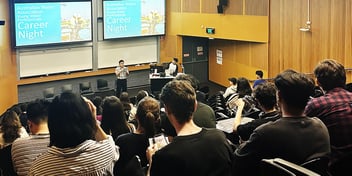Australian water technology in the running to win global prize
An Australian water research team is in the running to win the world-renowned Water Abundance XPRIZE powered by Tata Group and Australian Aid with their atmospheric water generation unit – an innovative design employing silica gel and solar-thermal energy to produce potable water anywhere in the world.
The Water Abundance XPRIZE competition aims to nurture the development of technology that produces potable water from thin air, with the winning project awarded a prize of US$1.75 million.
Contestants are required to design a device that extracts a minimum of 2000 litres of water a day from the atmosphere using 100% renewable energy, at a cost of no more than two cents a litre.
University of Newcastle School of Engineering Professor and research lead Behdad Moghtaderi said that, while the concept behind his device has been worked on by many researchers worldwide, his team has been developing the technology to be more effective.
“The concept behind our technology has been around for a while and it’s a great way of producing water from the atmosphere. However, the unit has to be small, efficient and cost effective to meet the requirements for the XPRIZE competition,” he said.
While there a two avenues for atmospheric water production available today, Moghtaderi said his team decided to explore options that need minimal energy to produce water.
“Available atmospheric water generation technology can be classified into two groups: one type works like an air-conditioning unit to produce water, but requires a lot of energy to work. The other type of technology uses absorbent materials,” he said.
“Our technology is in the second category; we use absorbent material to collect moisture from the air and then discharge it in the form of drinking water. We went with silica gel, as it is naturally available and low cost.”
Furthermore, Moghtaderi said most technologies rely on night-time cooling to discharge water from the selected material, but his team recognised the limitations with relying on atmospheric temperatures.
“Most similar technologies have chosen to employ the natural phenomena of night-time cooling to help discharge the moisture into water. While this is a good approach, it limits you to low temperature differences – depending on the location of the unit, you might have issues with cooling,” he said.
“When we did our testing in Australia, we realised that there are only a selection of locations that are consistently cool enough to produce water all year round. We aimed to overcome this particular limitation.”
By employing solar-thermal generated temperatures to carry moisture, the team’s unit eliminates the need to rely on night-time cooling to discharge water.
“We apply silica gel to the unit, allow it to absorb as much moisture as possible from the atmosphere, then we make use of solar-thermal energy to send hot air over the silica gel to pick up that moisture,” Moghtaderi said.
“We can heat up the air in our unit to about 80 degrees celsius. This means that ambient air, which is around 25 degrees celcius, will give us a significant temperature drop.
“Our unit makes cooling work more effectively, but most importantly, the atmosphere will always be more than ambient temperature and you will always get that cooling effect. As long as the unit uses hot air to carry moisture, it can be used anywhere on earth at any given time.”
Other than the obvious application of the technology in developing countries, the system could also be scaled up and applied around Australia to help mediate water security challenges.
“We have been thinking about larger-scale application. We have developed a concept design that is not modular, which would be capable of producing 500,000 litres of water per day. This would be enough for a small township that doesn't have easy access to drinking water,” he said.
“Regardless of what happens with the XPRIZE competition, we will take this technology to the next stage. We have a lot of parties interested in utilising our unit. We even have interest from organisations who want to use the unit for hydrogen production.”
Other shortlisted XPRIZE competition contenders include research teams from the USA, UK and India. XPRIZE competition representatives will come to Australia to test Moghtaderi’s unit in late July, with the global winner announced in August.
Register for the Australian Water Association NSW Conference in August to hear more from Behdad Moghtaderi about advances in atmospheric water generation.


